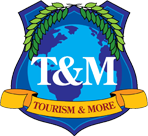Tourism Trends
February 2005
While no one can predict the future the careful observer of the world of tourism can note various trends that are taking place throughout the Western world when it comes to tourism and travel. Whenever one predicts trends we have to be very careful not to become too dependent on any one methodology. Often trends are determined in tourism by an over usage of statistical data. Statistical predictions can be dangerous. Statistics give a snapshot of current realities rather than of future realities. Often we extrapolate from current realities in the hope of predicting future trends. A better method is to use a mixture of quantitative and qualitative methods. These methods should be filtered through the prism of theory. Below are some possible trends to consider. Here as in all cases, all predictions should be measured against one’s own reality and assessments.
- Think price,price, and price! Due to the baby boom class’ coming of travel age, the cost of a trip is very important. Visitors ofen measure the “success” of their vacation types of bargains that the destinations offer. Visitors are looking for deals everywhere. Tourists often measure prestige not by how much the vacation cost but rather by how much money was saved. Interestingly enough many visitors think combination prices. These combinations mean that rather than seek a multitude of bargains they are looking for vacation packages. Visitors are not seeking low prices, but rather high quality and good service offered at a low price.
- Visitors like to brag about free items. Create a series of free give-aways that people cannot only take home but talk about. It shows that the person has received a good deal and will work as a not so subtle form of word of mouth advertising for your locale.
- Security matters. Visitors today want to see well trained visible tourism security professionals. The old adage that security scares visitors away simply no longer works. Instead, security is now a major marketing tool. Visitors, however, do not want sloppy security. Instead they want security that makes sense, is efficient and well trained. Visible tourism oriented security officers add to today’s bottom line and are an important part in developing marketing packages. If you have not updated your security plans since 9-11 or do are not using security as part of your branding exercises, then you are making a major error.
- Work at eliminating stress from the vacation experience. People will continue to work longer hours and under more stress. The electronic communications age has also come to mean that people are expected to be in constant contact with their offices. Make life easy, provide simple internet connections, have 24 hour business centers, and do not over charge. Business centers should not be located only in hotels, be creative. Provide free internet service at your convention center, in your police department or at your CVB headquarters. In a like manner, personnel need to be trained in stress relief techniques. The last thing that someone on a 3-day vacation needs is a late check-in and an early check-out. Such time schedules may be good for the hotel management, but only force visitors to feel like “wealthy refugees.” Travel should be fun rather than stressful. Those airlines, hotels, restaurants, and CVBs that cannot reduce stress will find themselves without customers.
- Use technology wisely. Never let it replace personal service. The last thing that someone with a complaint wants to hear is a menu on an answering machine. If you have a customer complaint or service number, make it personal and not mechanical. In a like manner, the trend toward the overuse of web pages will in the end prove costly to the travel industry. Fast food restaurants learned that too much technology creates inflexibility and lack of customer responsiveness. There is a place for technology and it can eliminate a host of problems, but tourism is about relationships. No one ever came back to a place because he or she liked the computer program. Travel and tourism is about the selling of memories and memories are based on human reactions. Technology is a help and should never be an end in and of itself.
- As a stress relief, offer in-home vacations. A number of people may decide that the stress of travel is not worth the fun of short travel vacations. Instead they may begin to look for day trip and stay at home vacations. These stay-at-home or close-to-home can provide a whole new range of visitors. Think creatively for the local market. Offer special explore your home town options, romantic get-aways and dine arounds for people who simply are too tired to travel.
- Think time and efficiency. Closely related to stress, is the issue of time. About 90% of all tourism customer complaints in one way or another are time related. You can refund/give back almost anything to an irate customer other than time. Be cognizant of your clients’ time needs. Develop schedules, office hours, and business hours for the travelers’ convenience instead of your convenience. Develop on-the-spot solutions and empower your employees to make decisions without wasting the traveler’s time.
- Make each day count. Remember that people have less time to travel so have easy to use travel packages ready. Because people have less time and more stress, the travel experience has to be developed in such a way that personal flexibility is maintained while time is not lost. Some of the ways to avoid loss of time are with special tourism parking areas, no ticket meters, good and clear signage, combination attraction passes, or pre-paid restaurant smart cards that deduct the cost of meals. In each case the destination, attraction or facility has thought through methods by which the visitor can get the most fun/relaxation from his/her tourism experience for the least amount of stress and personal effort.



